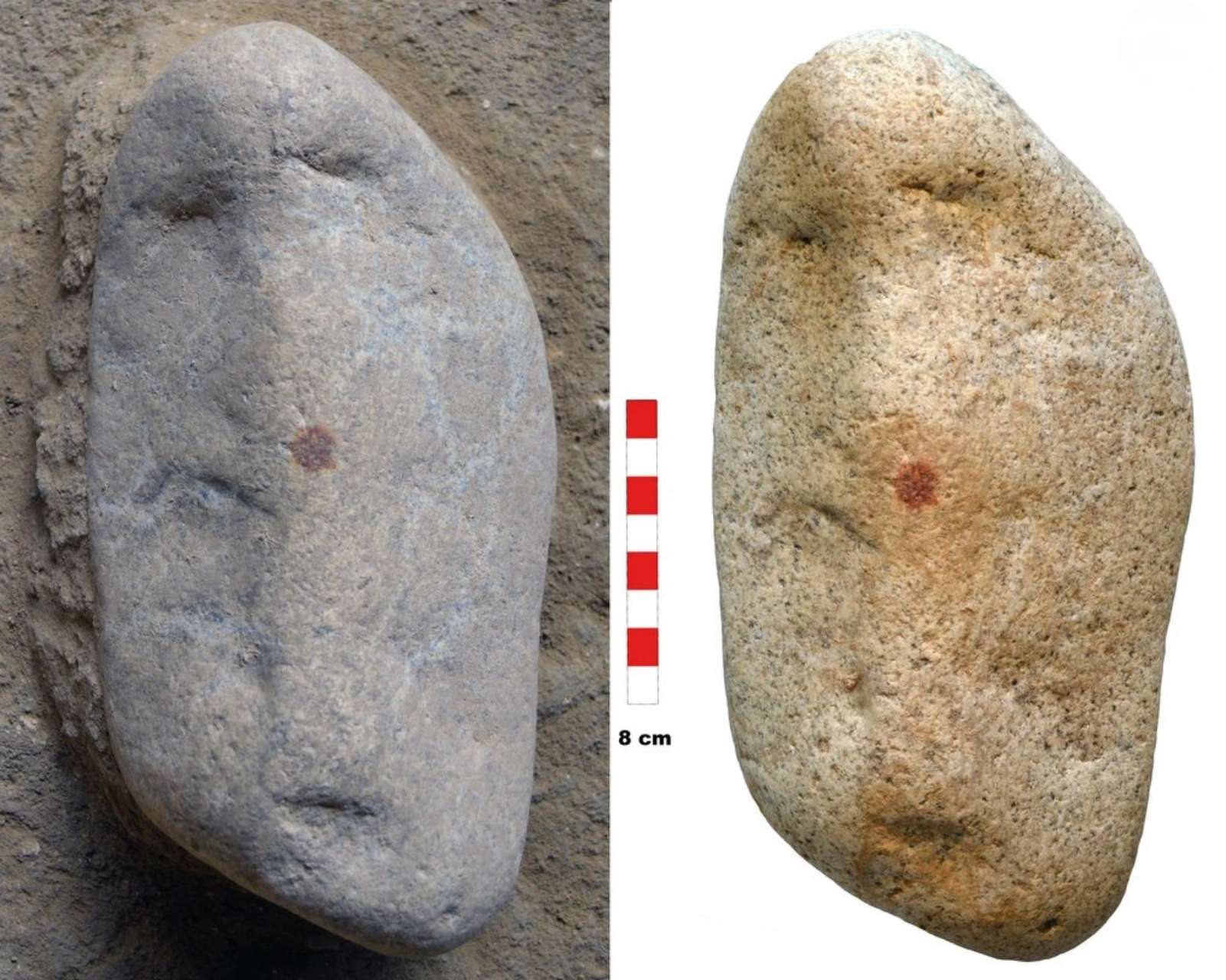World’s Oldest Fingerprint Discovered in Spain Is 43,000 Years Old
Source: GreekReporter.com

Archaeologists in Spain have uncovered what may be the world’s oldest complete human fingerprint, left by a Neanderthal more than 43,000 years ago on a granite pebble. The mark, pressed in red pigment, could be Europe’s earliest known example of portable art.
The discovery was made at the San Lázaro rock shelter on the outskirts of Segovia and confirmed after nearly three years of research involving archaeologists, geologists, and forensic experts. Their findings were recently published in the journal Archaeological and Anthropological Sciences.
David Álvarez Alonso, an archaeologist at Complutense University in Madrid said, “The stone was oddly shaped and had a red ochre dot, which really caught our eye.”
Oldest human fingerprint in the world just discovered in Spain, left by Neanderthals 43,000 years ago. pic.twitter.com/FPqR1ZQm9q
— Massimo (@Rainmaker1973) May 27, 2025
Natural grooves suggested a face
Measuring just over 20 centimeters (7.87 inches), the pebble features natural indentations that resemble eyes and a mouth. Álvarez said the team instantly noticed it looked like a face, but scientific evidence was needed before making any claims.
He said, “As we carried on our research, we knew we needed information to be able to advance the hypothesis that there was some purposefulness here, this was a symbolic object and that one possible explanation—although we’ll never know for sure—is that this was the symbolisation of a face.”
Red pigment not found at site
Analysis showed that the pigment was made of iron oxides and clay minerals not found in or around the cave. This suggested it had been brought in intentionally. To confirm whether the red mark had been made with a fingertip, the team consulted police forensic investigators.

They confirmed it was a human fingerprint, likely from an adult male, Álvarez explained. It had been placed exactly where a nose might appear.
A symbolic act, not a tool
That fingerprint, still clearly visible, transformed the stone from a curious object into what experts now believe is a deliberate symbolic act. The team ruled out any signs the stone had been used as a tool, such as a hammer or anvil.
The researchers suggest that the Neanderthal may have experienced pareidolia—a tendency to see faces in objects—and responded by marking the stone, turning it into a symbolic item.
“If we had a pebble with a red dot on it that was done 5,000 years ago by Homo sapiens, no one would hesitate to call it portable art,” Álvarez said. “But associating Neanderthals with art generates a lot of debate. I think there’s sometimes an unintentional prejudice.”
Ancient mind behind the mark
The fingerprint adds to growing evidence that Neanderthals were capable of abstract thinking and symbolic behavior, traits long believed to be unique to modern humans.
The researchers argue that the act of choosing the stone, applying pigment, and placing the mark shows a capacity for imagination, communication, and meaning-making.
“It’s not like art where, if you discover a cave painting, there are hundreds more you can use for context,” said Álvarez. “But our assertion is that the Neanderthals had a similar capacity for symbolic thought to Homo sapiens—and we think this object reinforces that notion.”
The original article: belongs to GreekReporter.com .
